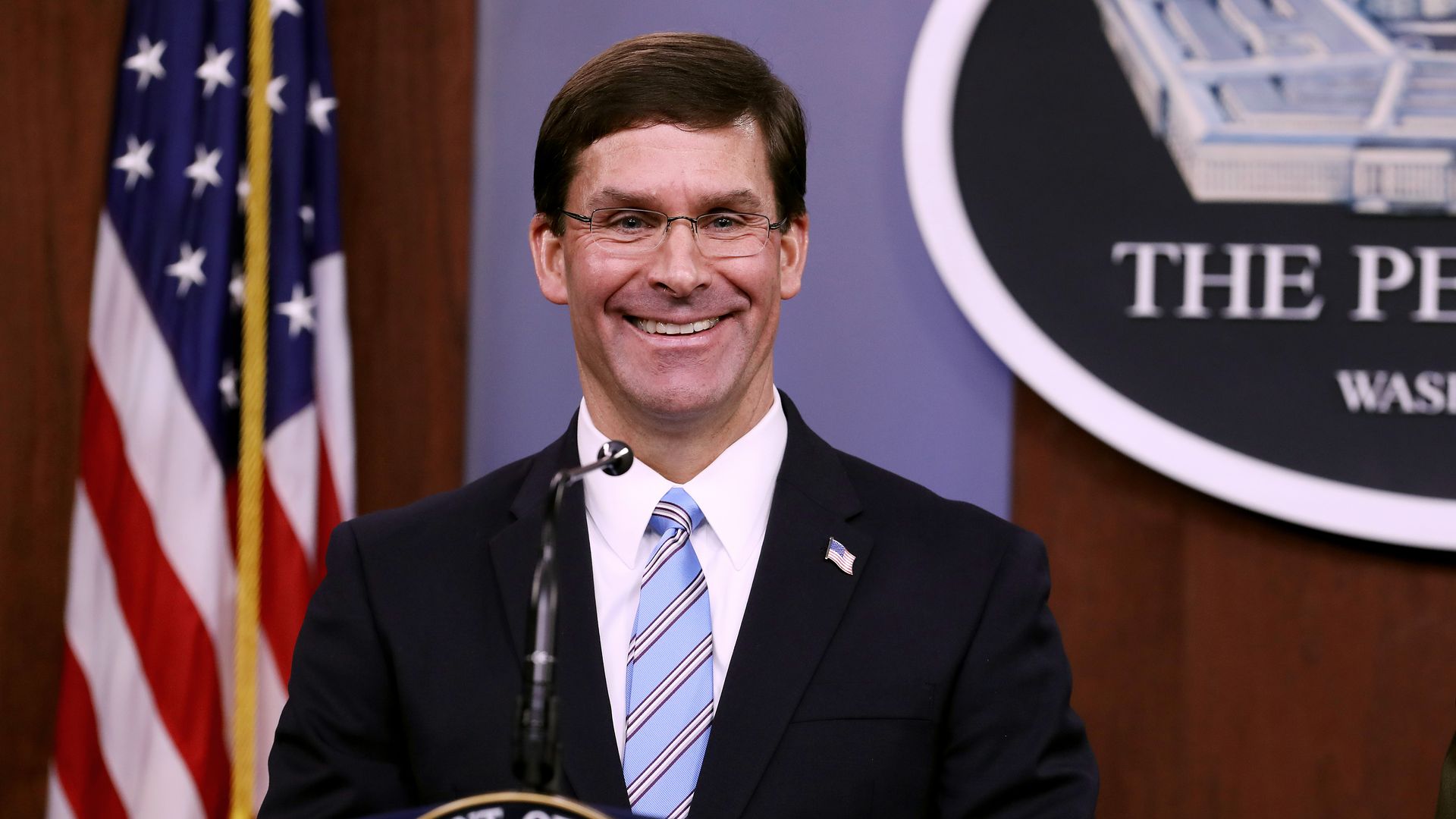
Secretary of Defense Mark Esper. Photo: Chip Somodevilla/Getty Images
Amid an administration-wide push to develop 5G networks, the Defense Department is exploring ways to share spectrum with wireless carriers and other businesses.
Why it matters: Airwaves are limited, and government and industry either have to divvy up the scarce resource or find better ways to share. In the past, the Defense Department has had to relocate communications systems to new airwaves to make room for commercial services, and sharing would help avoid that.
Driving the news: Secretary of Defense Mark Esper and Lisa Porter, the deputy undersecretary of defense for research and engineering, held a private dinner with executives from AT&T, Verizon, Sprint, wireless industry group CTIA and others last week to discuss 5G, according to people familiar with the meeting.
- The dinner was focused on the future of 5G and national security issues, according to a DOD official familiar with the gathering. The official noted that Esper has hosted a series of dinners with think tanks, media and others to discuss defense issues.
- Spectrum sharing was one of the issues raised, the official said, and noted that the conversations were consistent with recent DOD requests for proposals on 5G pilots.
- The pilots include a dynamic spectrum sharing project that would see the Defense Department explore sharing spectrum it uses for airborne radar systems with 5G networks.
Yes, but: The Defense Department doesn't run U.S. spectrum policy.
- The Commerce Department's NTIA coordinates government use of airwaves, while the Federal Communications Commission oversees private sector spectrum use.
- The wireless industry may be skeptical of DOD, given the push to include a controversial provision in an annual defense spending bill that wireless companies fear would give the military an unprecedented role in spectrum management.
Background: In the past, sharing of the same airwaves between business and government has been thorny and limited.
- One of the more notable examples is FirstNet, a first responders' network that took years to get going. AT&T operates the network and can use the airwaves commercially when they're not needed by the first responders.
- Spectrum sharing has been a technical challenge that forces difficult decisions over who has priority access to the airwaves. For example, consumers and government will both want first dibs during natural disasters or emergencies.
- But with 5G, spectrum sharing is becoming easier. Carriers are already designing networks to allow for 4G and 5G devices to operate at the same time in the same slice of airwaves. In the past, they had to assign each generation of network its own block of spectrum.


